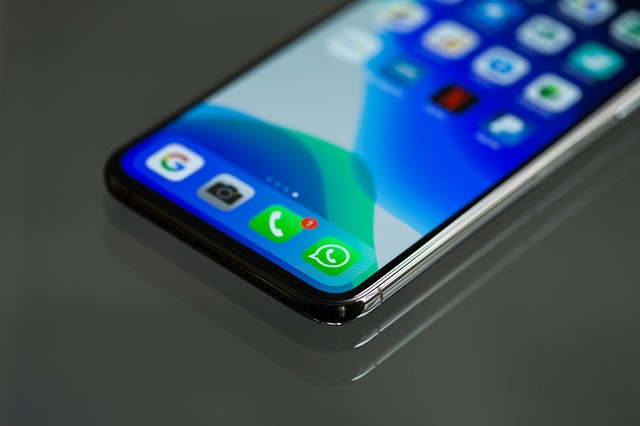Tips for Indie Mobile Game Developers to Secure Their Games
As an indie mobile game developer, you pour your heart and soul into creating a gaming experience that captivates players around the world. Your creativity knows no bounds, but unfortunately, there are always those video game hackers who seek to exploit it for their own gain. Securing your game from potential threats is crucial in today’s digital landscape. So read on and learn essential tips and strategies to help you fortify your game against cyber issues.
Secure the Code From Reverse Engineering
 Safeguarding the code is paramount. Reverse engineering involves analyzing and deconstructing a compiled program in order to understand its inner workings and potentially exploit vulnerabilities. To prevent this, you can employ various techniques. One of them is code obfuscation, which makes it challenging for hackers to decipher the logic of your game’s code by intentionally adding complexity and confusion. By obfuscating key parts of your codebase, such as variable names or function calls, you impede unauthorized access and deter potential attackers. You can also implement anti-tamper mechanisms within your game. These mechanisms detect any unauthorized modifications made to the game’s files or executables, thereby alerting you to potential security breaches.
Safeguarding the code is paramount. Reverse engineering involves analyzing and deconstructing a compiled program in order to understand its inner workings and potentially exploit vulnerabilities. To prevent this, you can employ various techniques. One of them is code obfuscation, which makes it challenging for hackers to decipher the logic of your game’s code by intentionally adding complexity and confusion. By obfuscating key parts of your codebase, such as variable names or function calls, you impede unauthorized access and deter potential attackers. You can also implement anti-tamper mechanisms within your game. These mechanisms detect any unauthorized modifications made to the game’s files or executables, thereby alerting you to potential security breaches.
Improve the Security of the Payment Gateways
In-app payments play a crucial role in the success of any mobile game. As an indie developer, it’s more than necessary to prioritize the security of your payment systems to protect both your game and your users’ financial information. This includes implementing strong encryption protocols and regularly updating and patching your payment gateway software helps to address any vulnerabilities that may arise over time.
Strengthen the Server Security
Strengthening server security not only protects sensitive user information but also safeguards your game from potential attacks and threats. Usually, game developers implement strong authentication measures, which can include using secure password hashing algorithms, enforcing complex password requirements, and implementing two-factor authentication for added protection. Additionally, encrypting sensitive data transmitted between your mobile game app and the server helps protect it from interception or tampering. Using industry-standard encryption protocols such as SSL/TLS ensures that data remains confidential during transmission.
Regularly Incorporate Penetration and Vulnerability Testing
 Penetration testing basically involves simulating real-world attacks on your game to identify potential vulnerabilities. This can help you discover weaknesses in your code or infrastructure that could be exploited by malicious individuals. By conducting regular penetration tests, you can stay hundreds of steps ahead of those who might seek to compromise the integrity of your game. Vulnerability testing, on the other hand, focuses on identifying any existing flaws or weaknesses in your application’s architecture or design. These vulnerabilities could range from weak encryption protocols to poorly implemented access controls. By regularly performing vulnerability assessments, you can proactively address these issues before they are exploited.
Penetration testing basically involves simulating real-world attacks on your game to identify potential vulnerabilities. This can help you discover weaknesses in your code or infrastructure that could be exploited by malicious individuals. By conducting regular penetration tests, you can stay hundreds of steps ahead of those who might seek to compromise the integrity of your game. Vulnerability testing, on the other hand, focuses on identifying any existing flaws or weaknesses in your application’s architecture or design. These vulnerabilities could range from weak encryption protocols to poorly implemented access controls. By regularly performing vulnerability assessments, you can proactively address these issues before they are exploited.
Securing your mobile game is crucial for indie developers who want to protect their hard work and ensure a positive user experience. Following these tips can significantly enhance the security of your game and lower the risk of unauthorized access or hacking attempts. In today’s digital landscape, where cyber threats are rampant, taking proactive measures to secure your mobile game is not just an option – it’s a necessity.…





 First, you have to download and install the game to play Racing Rivals for PC. You have to go on the official website of the game and download it from there. Select the racing game from the search results. Click on Download, and it will automatically get installed on your desktop or laptop computer. Follow the instructions on the screen to complete the installation.
First, you have to download and install the game to play Racing Rivals for PC. You have to go on the official website of the game and download it from there. Select the racing game from the search results. Click on Download, and it will automatically get installed on your desktop or laptop computer. Follow the instructions on the screen to complete the installation.





 Another normal machine that is very popular is the MIG welding machine. The difference with the arc welding machine is that the machine produces a small diameter wire coil, which is automatically fed through the welding gun. The MIG welding machine has proven to be the easiest to understand and use for beginners, and with a MIG unit, you can be sure to get the highest quality welds. Many refinishers prefer the MIG welding machine for the repair and production of small diameter car panels.
Another normal machine that is very popular is the MIG welding machine. The difference with the arc welding machine is that the machine produces a small diameter wire coil, which is automatically fed through the welding gun. The MIG welding machine has proven to be the easiest to understand and use for beginners, and with a MIG unit, you can be sure to get the highest quality welds. Many refinishers prefer the MIG welding machine for the repair and production of small diameter car panels.